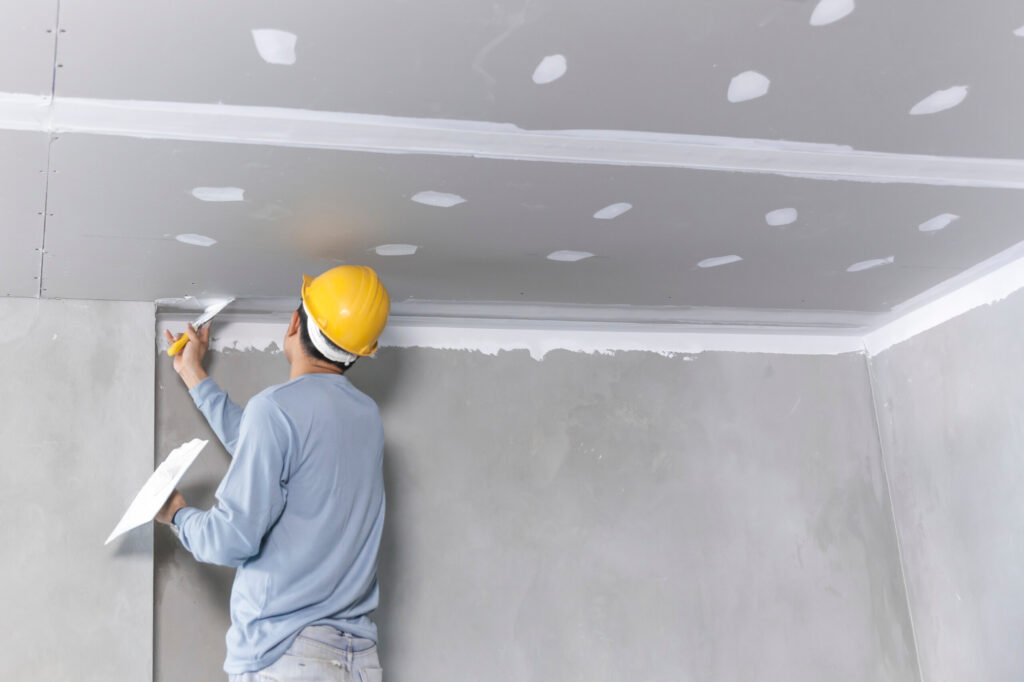
Advantages and Disadvantages of Using Plasterboard in Construction Projects
Plasterboard, also known as drywall or gypsum board, is one of the most commonly used materials in modern construction. Its widespread application in residential, commercial, and industrial projects is a testament to its versatility, ease of installation, and cost-effectiveness. However, like any material, plasterboard has both advantages and disadvantages that must be considered when planning a construction project. In this blog post, we’ll explore the key pros and cons of using plasterboard in construction to help you make an informed decision for your next project.
Advantages of Using Plasterboard
1. Quick and Easy Installation
One of the most significant advantages of plasterboard is its fast installation. Unlike traditional methods of wall construction, which may require brickwork or plastering, plasterboard sheets are lightweight and easy to handle. This makes the installation process quicker, saving both time and labor costs. Additionally, the sheets can be easily cut to size, reducing the amount of waste produced during installation.
2. Cost-Effective
Plasterboard is relatively inexpensive compared to other wall construction materials such as concrete or brick. Its cost-effectiveness makes it an ideal option for both large-scale
3. Versatility and Flexibility
Plasterboard can be used in a wide variety of applications, including interior walls, ceilings, partitions, and more. It’s available in different thicknesses, sizes, and types to suit various construction needs, including moisture-resistant, fire-resistant, and soundproof plasterboards. This versatility allows contractors to choose the right plasterboard for specific needs, whether for residential homes, office spaces, or industrial buildings.
4. Smooth and Ready-to-Paint Surface
Once installed, plasterboard provides a smooth and even surface that is ideal for painting or decorating. Unlike traditional wall finishes that require additional layers of plaster or joint compound, plasterboard walls can be quickly prepared for painting or wallpapering, saving time and effort.
5. Fire Resistance
Many types of plasterboard, particularly fire-resistant versions, offer excellent protection against fire. The gypsum material inside plasterboard is naturally fire-resistant, and special additives can enhance this property. As a result, using fire-resistant plasterboard can help increase the safety of buildings by slowing the spread of flames and providing valuable time for evacuation.
Disadvantages of Using Plasterboard
1. Susceptible to Moisture Damage
One of the biggest drawbacks of standard plasterboard is its vulnerability to moisture. In areas like bathrooms, kitchens, or basements, regular plasterboard can absorb moisture, leading to mold growth, weakening of the material, and even structural damage. While moisture-resistant plasterboard is available, it comes at a higher cost, making it necessary to assess the moisture level in a given environment before choosing the appropriate type.
2. Limited Strength
While plasterboard is durable under normal conditions, it is not as strong as other materials like concrete or brick. It can be prone to cracking or breaking if subjected to heavy impacts or pressure. In high-traffic areas or locations where the walls are likely to be bumped or hit frequently, extra precautions may be necessary, such as using reinforced plasterboard or applying protective coatings.
3. Dust and Mess During Installation
Although plasterboard installation is relatively quick, it can create dust and debris, which can make the installation process messy. This is particularly true when cutting plasterboard to size, as the dust can spread throughout the site. While protective gear can mitigate health risks, it’s essential to plan for cleanup and ensure the proper ventilation of the area during installation.
4. Environmental Impact
Although plasterboard is recyclable, its production process can contribute to environmental issues. The mining of gypsum, the raw material for plasterboard, is an energy-intensive process that can have an environmental impact. Additionally, when not disposed of correctly, plasterboard can contribute to landfill waste. As the industry moves toward more sustainable building materials, these factors may become more important to clients looking for eco-friendly solutions.
5. Maintenance and Repair
Although plasterboard is easy to install, it can be more challenging to repair compared to other materials. Cracks and holes in plasterboard can be unsightly, and while small damages can be patched with joint compound, larger issues may require complete panel replacement. Regular inspection and maintenance are needed to ensure that plasterboard walls remain in good condition, especially in areas where wear and tear are more common.
Conclusion
Plasterboard is an essential material for modern construction, offering numerous benefits such as cost-effectiveness, ease of installation, and versatility. Its fire-resistant and smooth surface properties make it a go-to option for many projects, whether for residential, commercial, or industrial use. However, it also comes with certain limitations, such as its susceptibility to moisture, limited strength, and environmental concerns.
When deciding whether to use plasterboard in your construction project, it’s important to carefully weigh both the advantages and disadvantages. If used appropriately, plasterboard can offer a practical and cost-efficient solution to meet the demands of today’s construction industry.
Call to Action
Are you planning a new construction project and considering plasterboard for your walls and ceilings? Contact us today to learn more about the best plasterboard options for your needs and ensure your project stays on track, both in terms of budget and performance.